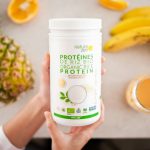Food Innovations: Exploring the Latest Trends in Culinary Science
Advancements in Food Processing
Technological progress is reshaping food processing, focusing on improving safety, quality, and sustainability. Methods like high-pressure processing (HPP) use pressures to inactivate pathogens, extending shelf life without compromising taste or nutritional value. This technique preserves the natural qualities of food, providing a fresh taste and maintaining vitamins and minerals.
Other innovations include pulsed electric fields (PEF), which use short bursts of electricity to process foods. This technique minimizes heat damage, preserving texture and flavor. Advances in food processing also concentrate on energy efficiency and reducing waste, essential in addressing environmental concerns. These improvements are not only enhancing product quality but are also aligning with the growing consumer demand for clean-label and minimally processed foods.
Culinary Product Development
Culinary product development focuses on creating innovative food products that meet health standards and improve taste. By incorporating technology, shelf life can be extended, addressing consumer needs for convenience.
Innovating for Health and Taste
Developers are now prioritizing both nutrition and flavor by using alternative ingredients that reduce unhealthy contents while maintaining taste. Sugar substitutes and low-sodium options are becoming popular in product formulation.
Additionally, food scientists explore plant-based proteins and fermented ingredients, which provide health benefits, such as enhanced nutrients and digestibility. Emphasis is placed on clean labels, with natural additives replacing synthetic ones.
Through sensory analysis and consumer feedback, taste profiles are refined, ensuring appealing products. The market trends reflect shifting consumer preferences towards healthier lifestyles, demanding innovations that do not compromise taste quality. Manufacturers are constantly adapting recipes to stay ahead in a competitive market, balancing health and flavor.
Extending Shelf Life through Technology
Technology plays a critical role in maximizing the viability of food products. Innovative packaging solutions, such as vacuum sealing and modified atmosphere packaging, extend freshness by inhibiting bacterial growth.
Advanced preservation methods, like high-pressure processing, help maintain nutritional value while eliminating pathogens. These techniques allow for longer storage without requiring synthetic preservatives.
Research in nanotechnology offers potential breakthroughs in shelf life enhancement by developing new materials that interact with food molecules to slow down spoilage. Additionally, manufacturers investigate techniques like controlled temperature environments to prolong product usability. Extending shelf life is essential for reducing food waste and improving distribution efficiency in the supply chain, ultimately benefiting both consumers and producers.



